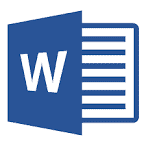
Tag: agile software
Stay up to date on what's new

Featured Blogs
Stay up to date on
what's new



Talk To Our Experts
Find Business Success with Agile Software Development Methodologies
Agile software development methodologies have proven their mettle in recent years and “agile” is becoming a buzz word in software development and project management. It makes sense, therefore, to understand what drives the success of these methodologies and consider if your business could benefit from implementing it.
What is the Agile Software Development Methodology?
Agile Development works on the principles of iteration and incremental development. It does not rely on a linear method approach but focuses on rapid delivery of fully functional application components. The focus is not on tasks, but on time phases called “sprints.” These sprints are of specific duration and begin with a detailed plan of what is to be delivered at the end of a sprint. Continuous testing, feedback, and improvement are vital aspects of the agile methodology.
At the heart of the agile methodology is its focus on individuals and interactions rather than processes and tools. Rather than focusing on comprehensive documentation to prove a project’s worth, the primary measure of progress in agile methodology is delivering working, tested software. This serves as a basis for collaboration between teams and customers, gaining feedback and swiftly responding to change. Value-driven development is given prime importance with the focus on delivering visible results and business value continuously. This way, stakeholders and projects have complete visibility on where the project stands and the business value they can expect at any given point of the project.
Scrum is an important aspect of the agile methodology and deserves a mention in the context of discussing agile methodologies. Using the principles of agile methodology, Scrum advocates a self-organizing and cross-functional team. The Scrum method is supported by two specific roles – the Scrum Master (who acts as the coach to direct teams towards agility and high performance) and the Product Owner (who helps the team build the right product and represents the company and end users).
Why Agile Methodology Trumps Traditional Development Methods
There are many reasons why Agile Methodology is being favored over traditional methods worldwide. We have listed out a few:
Faster and Better Workflow:
Agile Methodology is completely different from traditional Waterfall Methodologies, where projects follow a linear approach and progress from one step to another only after the previous step is completed. The traditional time-consuming method of relying on comprehensive documentation and analysis before the design and commencement of the project is eliminated.
Implementation and development begin almost immediately in agile development and the processes and development is refined in increments based on continuous feedback from customers and project teams. This also cuts out the verification and maintenance stage in the Waterfall Method, where the end product is tested, bugs are fixed, and the code is maintained. In the agile method, this testing and bug fixing is already being done continuously throughout the project, ensuring that the final product is refined and ready to be deployed.
Multilevel and continuous planning:
The absence of detailed analysis before implementation in agile methodology does not mean that the project is initiated without any substantial planning. On the contrary, multi-level and continuous planning is a vital feature of the agile development methodology. The planning follows a just-in-time approach, which aligns the information available with what details are necessary at the time.
The planning usually happens on at least two levels – the release level and the iteration level. At the release level, planning involves identifying and prioritizing the necessary features required in the software. This gives a basis to decide which features must be worked on first. Planning at the iteration level involves which features must be implemented next and the optimal size of batches which can be practically delivered in a single iteration.
Customer Focus:
The most important feature of agile methodologies is that it places the customer at the center of the development process. Teams are directed to think of product design through user stories and use cases, which ensures that customers are always kept at the heart of the process. User stories specify the needs of the end users and the various scenarios that they will use to fulfill that need.
Use cases show how the product developed will help end users achieve the outcome they want in the user story. In this way, the whole development process becomes focussed on what the customer needs. This is the foundation of Customer Experience (CX), which is fast becoming the defining success factor for companies today.
Related Reading: Read on to know how customer experiences reshape a company’s brand identity.
Business Success with Agile Software Development Methodologies
Businesses the world over are embracing and implementing agile methodologies in their efforts to improve their project management capabilities and improve performance. The 9th Global Project Management Survey, which surveyed 3,234 project management professionals from all over the world attests to this fact.
According to the survey, 71% of organizations use Agile approaches in their business. “We believe that agility could also be used in multiple ways— in everything we do,” says Phillippe Husser, a survey respondent and Senior Partner of Progress Direction Michelin. “In fact, the world is changing very quickly around us, so much so that we cannot afford anymore to have projects taking two to five years to deliver, because, during this time, the initial requirements have changed.”
Case in Point: Ericsson
Ericsson is a leading provider of Information and Communication Technology (ICT) to service providers and covers 40% of the world’s mobile phone traffic. The company with around 100,000 employees is a classic case in point to show the successful implementation of agile methodologies even in large-sized companies.
The company used to use a plan-driven software process but switched to agile in 2012. One of their main areas of focus was to develop a XaaS platform and services that the customers would use as a service. The results have been phenomenal.
Steve Dennings, an expert on agile methodology and author of The Age of Agile, summarizes the success points of Ericsson’s adoption of agile methodologies this way: “Now with Agile management, Ericsson has over 100 small teams working with its customers’ needs in three-week cycles. The result is faster development that is more relevant to the specific needs of the customers. The client gets value sooner. Ericsson has less work in progress. And Ericsson is deploying one to two years earlier than it otherwise would so that its revenue comes in one to two years earlier.”
Find Success with Agile Software Development
Agile development and methodology is an integral part of Fingent top software development company and creating agile software products for different industry sectors such as healthcare, finance, education, entertainment and media, real estate and retail amongst others. Get in touch with us so we can discuss how you can get effective in your agile journey and find success.
Related Reading: Check out these custom software development trends that every business should know.
Stay up to date on what's new

Featured Blogs
Stay up to date on
what's new










 Customer Relationship Management Application Software
Customer Relationship Management Application Software Enterprise Resource Planning Application Software
Enterprise Resource Planning Application Software Project Management Application Software
Project Management Application Software Business Process Management Application Software
Business Process Management Application Software Database
Database Resource Management Application Software
Resource Management Application Software Productivity Software
Productivity Software Time Management Application Software
Time Management Application Software Educational Software
Educational Software





































































